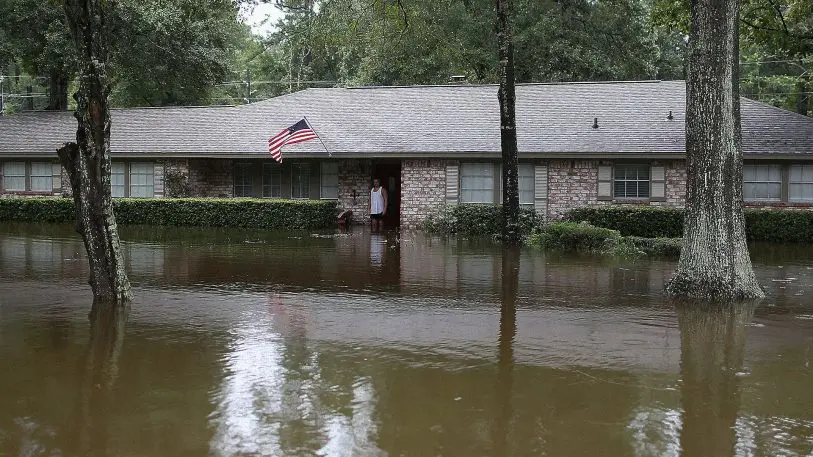In August 2017, Hurricane Harvey made landfall in Houston and poured water on the city for days, growing into the worst documented rainstorm in United States history. In the months after the storm, it became clear to the Houston Department of Housing and Community Development (HCD) that the money coming in from FEMA for homeowners impacted by flooding would not be enough; it rarely is. FEMA bases how much aid it administers to a disaster-struck region on how many people apply for it, and then again, which of those applications meet the agency’s threshold for sustained damage.
This approach results in a severe underestimation of need: It fails to capture people who do not know to apply, or cannot, or whose properties sustained damage that FEMA doesn’t recognize. So Houston HCD, in November, issued a request for proposals, calling for a new, data-driven approach to identifying and quantifying need after a disaster like Harvey strikes.
“Houston’s been hit by five federally declared disasters in three years,” Tom McCasland, HCD director, tells Fast Company. “If the damage from these disasters is chronically undercounted, then we’re being chronically under-resourced for recovery. Harvey presented an opportunity to take on the problem of undercounting with this data project.”

HCD ultimately awarded the contract to the data consultancy firm Civis Analytics, which proposed a method of calculating aid based on both existing data streams that the city collects, like trash pickup locations and flood level modeling, and comprehensive community surveys and outreach. “We focused on helping them understand, at a really individual level, exactly which households were impacted by flooding,” says Amy Deora, Civis’s director of public sector analytics. The federal government agencies responsible for post-disaster relief, FEMA and the Department of Housing and Urban Development, she adds, “use a basic set of standards and heuristics to estimate aid–they assume an average level of damage for each house that reports, and assign funding in that way.”
But Civis’s model showed that this method resulted in an incomplete picture of the need following Harvey–one that failed to reach 50% of Houstonians who experienced flooding, and underestimated the need for housing funding by $2 billion.
So instead of leaning on applications for FEMA assistance, Civis assessed need by first accessing property files from the Harris County Assessors’ database to get a sense of how many residential buildings existed in Houston before the hurricane, and what their value was. They then cross-analyzed that data with stats from the Census Bureau on how many people lived in each building, what their income was, and whether they rented or owned. Working with Dewberry, a company that models flood patterns, Civis overlayed the flooding impact from Harvey with the residential landscape of the city that they compiled. “We wanted to start from the ground up,” Deora says. They also analyzed metadata on emergency calls placed during the hurricane, and much more esoteric data points, like the drone footage that some residents uploaded to YouTube showing the extent of the flooding.
From this model, Civis learned that not only did the traditional way of assessing need dramatically undercount the people affected, it also perpetuated discrepancies in aid delivery along socioeconomic lines. The flooding had the largest impact in areas of high poverty, and residents in 12 neighborhoods sustained levels of damage to their buildings that amounted to more than 50% of their annual income to repair. But so far, most of the assistance has flowed to neighborhoods with high home values. Residents of lower-income communities often face barriers to accessing aid under the traditional FEMA-centric system, Deora says: They may not know to apply for FEMA assistance, or live in a mobile home, which does not qualify for aid. Around one in five Houstonians are immigrants who may not be comfortable with English, and for whom the FEMA application process is doubly daunting.
When they began developing the model in February, Deora says, the initial goal was to discover the extent to which the current aid delivery model undercounted people in need. But because the Civis model pulls from such a wide variety of data, it can also show other patterns in how a disaster affects communities: The team found that people with disabilities were disproportionately affected, and seniors sustained the most damage, dollar-value-wise, because they were more likely to be homeowners. They also noted a 15% rise in homelessness following the flood.
All of these data points, Deora says, will go toward informing the city in how it continues to source and deliver assistance. “The data will help us identify priority areas for starting our outreach for disaster recovery so that we’re prioritizing helping those people with the fewest private resources to recover,” McCasland says. Currently, Houston HCD is sourcing feedback on the new analytical model, and will use the data as leverage to raise more funds for housing rebuilding and repair projects, but also flood mitigation efforts and homeless services efforts. While the Civis model was built specifically for Houston, it’s applicable for other cities, Deora says, and could help at-risk localities identify at-risk populations–based on flooding models and residential data–before disaster strikes.
Recognize your brand’s excellence by applying to this year’s Brands That Matter Awards before the early-rate deadline, May 3.
